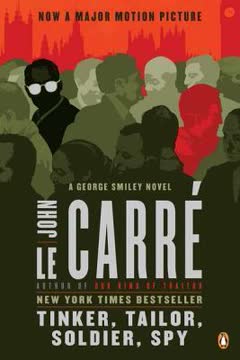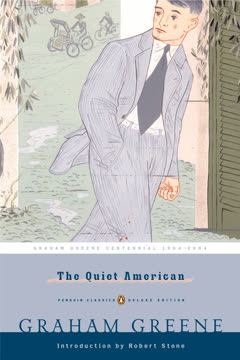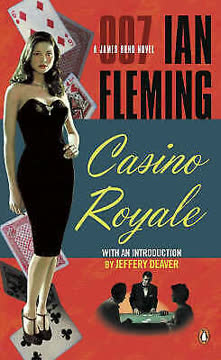Plot Summary
The Watcher Arrives
Jim Prideaux, a mysterious, injured man, arrives at a rural English prep school, taking up a post as a temporary teacher. His presence is noted by Bill Roach, a lonely, observant boy who becomes fascinated by Jim's odd habits and military bearing. The school community is wary, sensing Jim's outsider status and the secrets he carries. Roach, a natural watcher, is drawn to Jim's solitude and pain, feeling a kinship with the enigmatic newcomer. As Jim settles in, his past and the reasons for his injury remain hidden, but his gentle strength and odd routines begin to endear him to the boys, even as the adults remain suspicious. The stage is set for secrets to surface.
Smiley's Rainy Return
George Smiley, recently forced into retirement from the British intelligence service known as the Circus, trudges through a rain-soaked London, weighed down by personal and professional loss. His marriage to the beautiful, elusive Ann is in shambles, and he is haunted by the abrupt end of his career. An unexpected encounter with an old colleague, Roddy Martindale, draws Smiley back into the world of espionage gossip and rumors about the Circus's new leadership. Smiley's sense of displacement and melancholy is palpable, but beneath his meek exterior, his mind remains sharp, quietly cataloging the shifting allegiances and hidden dangers that still surround him.
The Circus in Shadows
The British intelligence service, the Circus, is in a state of flux. Control, the former chief, has been ousted after a disastrous operation in Czechoslovakia, and Percy Alleline has taken over, supported by a clique of ambitious lieutenants. Smiley, now an outsider, is both relieved and unsettled by his distance from the Circus's internal politics. The organization is divided, with old loyalties fraying and new power structures emerging. Smiley's own sense of purpose is eroded, but he remains alert to the possibility that something is deeply wrong at the heart of the Circus—a suspicion that will soon draw him back into the game.
The Summons to Ascot
Smiley is abruptly summoned by Peter Guillam, a loyal former colleague, to a clandestine meeting at the home of Oliver Lacon, the government's intelligence overseer. There, they are joined by Ricki Tarr, a rogue field agent with a reputation for trouble. Tarr claims to have uncovered evidence of a Soviet mole at the highest level of the Circus. His story is wild and dangerous, involving a doomed love affair with a Russian agent, Irina, and a secret that could destroy the service. Smiley is reluctantly drawn into the investigation, tasked with uncovering the truth while evading the very organization he once served.
Tarr's Dangerous Story
Ricki Tarr recounts his fateful encounter in Hong Kong with Irina, a Russian intelligence officer desperate to defect. Their brief, intense romance is shadowed by fear and paranoia, as Irina reveals knowledge of a deep-cover Soviet mole—code-named Gerald—embedded within the Circus. Tarr's attempt to extract Irina ends in disaster: she is abducted and presumed dead, and Tarr is forced to flee, hunted by both the Russians and his own service. His story, corroborated by a secret diary Irina left behind, is the spark that reignites Smiley's investigative instincts and sets the hunt for the mole in motion.
Irina's Secret Diary
Irina's diary, translated and recited by Tarr, is a raw, emotional document that details her life as a Soviet agent and her knowledge of the mole Gerald. She describes the inner workings of Moscow Centre, the recruitment of Englishmen by Karla—the legendary Soviet spymaster—and the elaborate methods used to protect the mole's identity. The diary is both a love letter to Tarr and a warning to the West, filled with fear, longing, and a desperate hope for freedom. Its revelations confirm Smiley's worst suspicions: the Circus has been compromised at the highest level, and the enemy is within.
The Mole's Revelation
Smiley, now convinced of the mole's existence, begins a methodical investigation. He reviews the careers and personalities of the Circus's leadership—Alleline, Haydon, Bland, and Esterhase—each with their own secrets and ambitions. The Witchcraft operation, a source of seemingly invaluable Soviet intelligence, is revealed to be the likely conduit for the mole's activities. Smiley's analysis, aided by the memories of old colleagues like Connie Sachs, points to a conspiracy that is both elegant and insidious, orchestrated by Karla to turn the Circus inside out. The hunt for Gerald intensifies.
The Witchcraft Web
The Witchcraft operation, centered on the mysterious source Merlin, has brought the Circus unprecedented prestige and access to American intelligence. But Smiley's scrutiny reveals that Witchcraft is a double-edged sword: the flow of information is too good, too regular, and too perfectly tailored to the Circus's needs. The operation is tightly controlled by Alleline and his inner circle, with meetings held in secret and a special safe house in London. Smiley deduces that Witchcraft is a Soviet deception, designed to protect the mole and manipulate Western intelligence. The web tightens around the suspects.
The Circus Reorganized
As Smiley and Guillam dig deeper, they uncover the extent of the Circus's reorganization under Alleline. Lateralism has replaced the old regional structure, concentrating power in the hands of London Station and its leaders. The new regime is marked by secrecy, exclusion, and a culture of mutual suspicion. Smiley's investigation is hampered by surveillance, missing files, and the ever-present threat of exposure. Yet, with the help of loyal allies and the dogged Inspector Mendel, he pieces together the movements and motives of the suspects, inching closer to the truth.
Smiley's Relentless Pursuit
Smiley's inquiry becomes a race against time. He interviews former colleagues, analyzes Witchcraft's product, and reconstructs the events leading to the disastrous Testify operation in Czechoslovakia, where Jim Prideaux was betrayed and shot. Smiley's conversations with Connie Sachs, the Circus's legendary researcher, provide crucial insights into the Soviet networks and the enigmatic Polyakov, the supposed cultural attaché who is in fact the mole's handler. Smiley's methodical, patient approach—marked by empathy and intellectual rigor—slowly unravels the layers of deception that have protected Gerald for years.
Connie's Memory Vault
Connie Sachs, exiled from the Circus for her inconvenient brilliance, becomes Smiley's most valuable source. Her encyclopedic memory and obsessive research reveal the patterns of Karla's operations, the grooming of moles, and the significance of Polyakov's role in London. Connie's recollections, tinged with nostalgia and regret, illuminate the personal and political betrayals that have shaped the Circus's history. Her testimony confirms Smiley's suspicions and points directly to the inner circle of Witchcraft as the locus of treachery. The past, long buried, is the key to the present crisis.
Guillam's Risky Theft
Peter Guillam, risking his career and freedom, infiltrates the Circus archives to steal the Testify file—the official record of the operation that destroyed Control and nearly killed Prideaux. The file, heavily redacted and missing crucial documents, nonetheless provides evidence of a cover-up and the manipulation of events by the mole. Guillam's daring act, conducted under the noses of his suspicious colleagues, is a turning point in the investigation. The stolen file, combined with Smiley's analysis, brings the identity of Gerald into sharper focus and sets the stage for the final confrontation.
The Testify Catastrophe
The story of Operation Testify is revealed in full: Control, desperate to unmask the mole, sends Prideaux into Czechoslovakia to meet a supposed defector. The mission is a trap, orchestrated by Karla and betrayed by Gerald. Prideaux is ambushed, shot, and imprisoned; the Circus's networks in Eastern Europe are rolled up, and Control is discredited and forced out. The catastrophe is not just a professional disaster but a personal one, shattering lives and loyalties. Smiley's reconstruction of Testify exposes the depth of the Circus's corruption and the cost of betrayal.
Haydon's Hidden Hand
All evidence now points to Bill Haydon, the Circus's golden boy and Smiley's old friend, as the mole Gerald. Smiley's memories of Haydon—his charm, brilliance, and ambiguous loyalties—are re-examined in light of the mounting proof. The final pieces fall into place: Haydon's role in Witchcraft, his manipulation of colleagues, and his relationship with Ann, Smiley's wife, all serve Karla's design. The emotional weight of the revelation is immense, as Smiley confronts the personal and national consequences of Haydon's treachery. The stage is set for the unmasking.
The Trap is Sprung
Smiley, with Guillam and Mendel, orchestrates a sting operation at the Circus's secret safe house in Camden. Using Tarr as bait and manipulating the Witchcraft signals, they lure Haydon and Polyakov into a meeting, catching them red-handed. The confrontation is tense and anticlimactic, marked by exhaustion and a sense of inevitability. Haydon's arrest is both a victory and a tragedy, exposing the rot at the heart of the Circus but offering little solace to those who have suffered. The mole is unmasked, but the damage is done.
The Unmasking at Lock Gardens
In the aftermath, Haydon is interrogated at Sarratt, the Circus's training school. He confesses to his role as Gerald, explaining his motives in terms of disillusionment, ideology, and personal grievance. Smiley listens, torn between anger, pity, and a sense of futility. Haydon's betrayal is both political and deeply personal, entwined with his relationship to Smiley, Ann, and Prideaux. The Circus reels from the scandal, its leadership disgraced, its reputation in ruins. Haydon's fate is sealed—not by the service, but by a final act of vengeance from Prideaux, who cannot forgive the ultimate betrayal.
The Aftermath and Reckoning
With the mole exposed and the Circus in disarray, Smiley is asked to return and help rebuild. The cost of victory is high: friendships shattered, careers ended, and the service's moral authority in question. Prideaux, broken but free, returns to his quiet life at the school, haunted by loss but finding solace in small acts of kindness. Smiley, too, is left to reckon with the personal and professional consequences of the case, his marriage to Ann still unresolved, his faith in the service forever altered. The story ends not with triumph, but with a sober recognition of the price of loyalty and the enduring complexity of the human heart.
Characters
George Smiley
Smiley is the heart of the novel: a small, unassuming, and deeply intelligent man, forced out of the Circus but unable to escape its shadow. His marriage to Ann is a source of pain and vulnerability, exploited by his enemies. Smiley's greatest strength is his empathy—his ability to see into the hearts of others, to understand their motives and weaknesses. He is haunted by the betrayals of friends and the moral ambiguities of espionage, yet he persists, driven by a quiet sense of duty and a longing for truth. Over the course of the story, Smiley transforms from a passive exile to a relentless hunter, confronting not only the mole but his own capacity for forgiveness and self-doubt.
Bill Haydon
Haydon is the Circus's star—brilliant, charming, and effortlessly talented. He is Smiley's old friend, Ann's lover, and the architect of the Circus's greatest betrayal. Haydon's motivations are complex: a mix of ideological disillusionment, personal vanity, and a longing for significance in a declining Britain. He is both victim and perpetrator, seduced by Karla's vision and driven by a sense of superiority and alienation. Haydon's betrayal is not just political but deeply personal, wounding those closest to him. In the end, he is a tragic figure, undone by the very qualities that made him exceptional.
Jim Prideaux
Prideaux is the field agent sacrificed in the Testify operation, left broken in body and spirit. His exile to the prep school is both a punishment and a refuge, where he finds a measure of peace among the boys. Prideaux's loyalty to the Circus, to Haydon, and to Smiley is unwavering, even as he grapples with the trauma of betrayal and torture. His relationship with Bill Roach, the lonely schoolboy, reveals his gentleness and capacity for care. Ultimately, Prideaux's story is one of endurance and quiet heroism, culminating in a final act of retribution against Haydon.
Peter Guillam
Guillam is Smiley's trusted lieutenant, caught between his loyalty to the old Circus and the demands of the new regime. He is resourceful, principled, and willing to risk everything to uncover the truth. Guillam's personal life is marked by uncertainty and loss, mirroring the instability of the service he serves. His journey is one of maturation, as he confronts the realities of betrayal and the limits of idealism. Guillam's courage and decency provide a counterpoint to the cynicism and duplicity that pervade the Circus.
Percy Alleline
Alleline is the new chief of the Circus, elevated by the success of the Witchcraft operation. He is a man of bluster and ambition, eager for recognition and power but lacking the subtlety and insight of his predecessors. Alleline's rise is facilitated by the mole, who uses him as a shield and a pawn. His inability to see the dangers around him is both a personal failing and a symptom of the Circus's institutional blindness. In the end, Alleline is left disgraced, a victim of his own vanity and the machinations of others.
Roy Bland
Bland is the Circus's expert on Eastern Europe, a working-class intellectual with a sharp mind and a sardonic wit. He is part of the Witchcraft inner circle, drawn into the conspiracy by ambition and a sense of belonging. Bland's political convictions are ambiguous, shaped by disillusionment and a desire for significance. His complicity in the mole's scheme is both a moral failing and a reflection of the Circus's corrupted values. Bland is ultimately a tragic figure, undone by his own cleverness and the company he keeps.
Toby Esterhase
Esterhase is the Circus's Hungarian-born head of surveillance, a master of tradecraft and self-preservation. He is eager to please, desperate for acceptance, and willing to bend the rules to stay in favor. Esterhase's role in the Witchcraft operation is both essential and ambiguous; he is the fixer, the facilitator, the man who makes things happen. His loyalty is to the Circus as an institution, but his sense of belonging is always precarious. Esterhase's survival instincts make him both valuable and suspect, a man who navigates the shifting tides of power with cunning and adaptability.
Ricki Tarr
Tarr is the field agent whose love affair with Irina sets the plot in motion. He is impulsive, resourceful, and perpetually on the run—from his enemies, his employers, and himself. Tarr's relationship with Irina is genuine, marked by vulnerability and longing, but it is also the means by which the mole is exposed. Tarr is both a victim and a survivor, caught in the crossfire of larger forces. His story is one of redemption, as he risks everything to bring the truth to light.
Connie Sachs
Connie is the Circus's memory, a woman of prodigious intellect and photographic recall, cast out for knowing too much. Her love for the service and its people is deep and abiding, even as she mourns its decline. Connie's encyclopedic knowledge and dogged persistence provide Smiley with the clues he needs to unravel the mole's identity. She is a tragic figure, embodying the costs of loyalty and the pain of exclusion, but also a source of wisdom and hope.
Bill Roach
Roach, known as "Jumbo," is the schoolboy who befriends Jim Prideaux and becomes an unwitting observer of the adult world's secrets and betrayals. His watchfulness and longing for connection mirror the larger themes of the novel: the search for meaning, the pain of isolation, and the possibility of redemption. Roach's relationship with Jim is a source of comfort and healing for both, a reminder of the innocence that survives amid the wreckage of trust.
Plot Devices
The Mole Hunt Structure
The novel's central device is the classic "mole hunt"—an investigation into the presence of a double agent at the heart of an intelligence service. Le Carré structures the narrative as a puzzle, with Smiley piecing together fragments of evidence, memories, and testimony to uncover the truth. The story unfolds through a series of interviews, flashbacks, and document reviews, creating a sense of cumulative revelation. Foreshadowing is used extensively, with early hints of betrayal and duplicity blossoming into full-blown conspiracy. The narrative is recursive, with past and present intertwining, and the emotional stakes rising as the personal and political dimensions of the mole's treachery are revealed.
The Witchcraft Operation
Witchcraft is both a plot device and a symbol: a source of seemingly invaluable Soviet intelligence that brings the Circus prestige and power, but is in fact a carefully constructed deception. The operation's secrecy, special handling, and restricted access create an atmosphere of paranoia and exclusion, masking the mole's activities and manipulating the service's priorities. Witchcraft's success is the very thing that blinds the Circus to its own vulnerability, illustrating the dangers of wishful thinking and institutional self-delusion.
The Testify Catastrophe
The disastrous operation in Czechoslovakia—Testify—is the event that precipitates the Circus's crisis. Its failure is both a symptom and a cause of the service's decline, exposing the rot within and providing the cover for the mole's continued activities. Testify's aftermath—Control's ouster, Smiley's exile, Prideaux's ruin—sets the stage for the novel's central investigation. The operation's details are revealed gradually, through multiple perspectives, heightening suspense and deepening the sense of tragedy.
The Personal as Political
Le Carré weaves the personal lives of his characters—Smiley's marriage, Haydon's affairs, Prideaux's exile—into the fabric of the espionage plot. The boundaries between public duty and private loyalty are blurred, with personal grievances and desires shaping the course of history. The mole's betrayal is not just a matter of state, but a wound inflicted on friends, lovers, and colleagues. The novel's emotional power derives from this interplay, as the search for Gerald becomes a search for meaning and connection in a world defined by secrecy and suspicion.
Analysis
Tinker, Tailor, Soldier, Spy is more than a spy thriller; it is a profound exploration of the human consequences of deception, both personal and political. Le Carré uses the mole hunt as a metaphor for the loss of faith—in institutions, in ideals, in one another. The novel's characters are haunted by the erosion of trust, the ambiguity of motives, and the impossibility of certainty. Smiley's journey is not just an investigation, but a reckoning with his own limitations and the failures of the world he serves. The Circus, once a symbol of British competence and honor, is revealed as vulnerable to vanity, ambition, and self-delusion. The cost of rooting out the mole is high: friendships destroyed, innocence lost, and the service's moral authority shattered. Yet, amid the wreckage, there is a glimmer of hope—in the persistence of decency, the possibility of forgiveness, and the enduring need for connection. Le Carré's novel remains a timeless reflection on the price of loyalty and the enduring complexity of the human heart, as relevant in today's world of shifting allegiances and hidden dangers as it was at the height of the Cold War.
Last updated:
Review Summary
Tinker, Tailor, Soldier, Spy is widely praised as a masterful espionage novel. Readers appreciate Le Carré's intricate plotting, complex characters, and authentic portrayal of Cold War-era intelligence work. The slow-burning narrative and introspective tone are seen as strengths by many, though some find the pacing too slow. George Smiley is lauded as a compelling protagonist, and the book's exploration of loyalty, betrayal, and moral ambiguity resonates with readers. While some struggle with the jargon and complexity, most consider it a rewarding and intellectually stimulating read.
Download PDF
Download EPUB
.epub digital book format is ideal for reading ebooks on phones, tablets, and e-readers.











